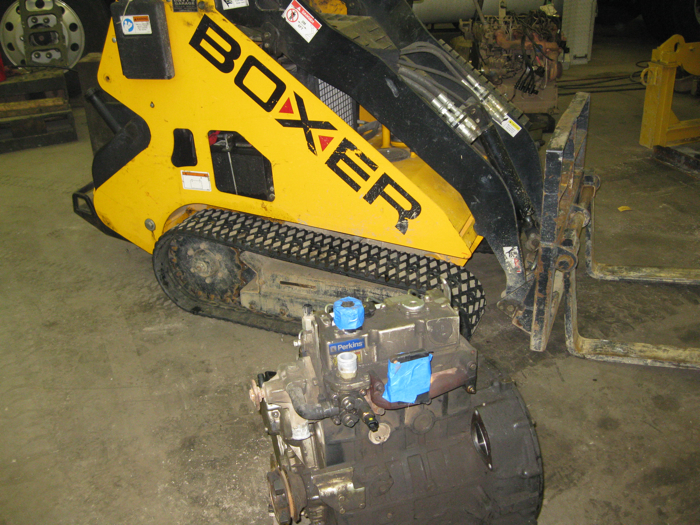It’s been two years now since I joined the ranks of Engine Builder magazine, and if I’ve learned one thing above all else since writing for this industry, it’s that there are always new opportunities. The trouble sometimes is just finding where those opportunities lie.
One of these opportunities recently brought to my attention can be found in the small bore diesel market. This is a market made up of seemingly countless applications such as skid steers, mini excavators, generators, marine applications and much more – all powered by just a few engines.

Are you familiar with Yanmar? Shibaura? I don’t doubt you’ve heard these engine manufacturer’s names, but you might not realize that these two Japanese engines make up a large portion of the small bore diesel market.
Shibaura engines for this market are sold to OEs such as Perkins, Caterpillar and New Holland and are branded as an OEM engine. Yanmar engines are sold to John Deere, Cub Cadet, Takeuchi, and others, and marketed as an OE engine as well. It’s a lot of different brands using just a couple engines.
So why is there opportunity here? These Yanmar and Shibaura engines were intended primarily as a throw away engine. Parts from the OEs to rebuild a Yanmar or Shibaura small bore diesel were typically cost prohibitive for a rebuilder. Therefore, much of this work went to large reman operations or the OE would start from scratch with a new engine. This was the outlook of the small bore diesel market as little as five or six years ago.
Today, there are growing options for small bore diesel aftermarket parts that don’t price engine builders out of the market. Paul Kelly of Maxiforce believes the time is right for rebuilders to profit.
“If you talk to engine builders who are starting to get in front of Yanmar, Kubota, Shibaura engines, they’ll say it’s a huge opportunity that they were turning down a few years ago,” Kelly says.
Despite better availability and affordability of parts for these engines, the small bore diesel market remains one of the most neglected in the diesel aftermarket. But why? Engine builders can make more money in this market than with automotive because there is far less competition in comparison.
Until recently engine builders were scared of this market because they didn’t understand it, and they couldn’t get the necessary parts. This is changing.
“It’s a big, big market of equipment and a huge market of engines that a lot of these builders are turning away because they don’t know they have options for aftermarket parts,” Kelly says.
Engine builders looking to gain more business should consider the small bore diesel market as a viable one. Make sure you do your due diligence and make sure you’re not turning away this business if it is coming into your shop. There are opportunities here.
Even if you’re not necessarily doing engine rebuilding work on small bore diesel engines, an engine builder can make money in this market by buying the aftermarket parts and reselling them to customers. You’ll profit and save customers money over the alternatives.
A Perkins/Shibaura engine N843 (403C-15) costs around $4,950 + $500 core and another very popular Perkins/Shibaura N844L (404C-22) costs $6,885 + $500 core. This same engine is marketed as a Caterpillar 3024 engine as well, and the prices of the engine marketed as a CAT are even more expensive. So to buy a new engine you’re looking at spending a minimum of $5,500/$6,000. However, you can rebuild the same engine with an overhaul kit for a much lower price, often saving customers up to 50 percent.
The silver lining to all of this, especially in today’s day and age, is that an increase in engine rebuilding work for this market would make it much greener. Rather than most of these engines getting thrown away and the OEs building another core, your business opportunity increases the recycling of these small bore diesels. Make the world greener and put some green back in your pocket by taking on small bore diesel engine work. Here’s to new market goals in 2016.














